

The Collector
Thomas Cheeseman and the making of the Auckland Museum
Andrew McKay | Richard Wolfe
The Victorians had many fads. They included freak shows, seances, collecting Japanese ceramics and ferns, and for a time they were especially passionate about orchids. Wealthy enthusiasts gave their hothouses over to the flowers and despatched orchid hunters to the tropics. When Charles Darwin was preparing for the 1831–36 voyage of the HMS Beagle, which he joined as captain’s companion and naturalist, he promised to collect orchids from Patagonia for Robert Brown, the botanist at the British Museum. 1
Charles Darwin eventually became ‘so wrapped up in orchids’ that the hothouse on his own property, Down House in Kent, was stocked with plants from the Royal Botanic Gardens at Kew in London, the most extensive botanical library and largest and most valuable private herbarium in the world.2 He became ‘lost on the floral intricacies’ of the plants while wrestling with their means of fertilisation, recognising that their petals were ‘exquisite devices’ for guiding bees and moths to particular spots for ‘dobbing and docking’, and the uplifting and transference of pollen.
Previous Detail of Geum aleppicum, collected by Thomas Cheeseman at Lake Tekapo in 1883 (see page 128). Auckland War Memorial Museum Tāmaki Paenga Hira, AK4745
Right Pterostylis trullifolia, collected by Thomas Cheeseman in Titirangi in September 1883. This specimen is an isolectotype — a copy of an example of the original specimen. Auckland War Memorial Museum Tāmaki Paenga Hira, AK3531
The Victorians of Britain also took an interest in orchids from New Zealand. In September 1842 a nursery in Hackney, East London, approached the recently formed Wellington Horticultural and Botanical Society seeking three types of New Zealand native plants: conifers (seed cone-bearing plants, including kauri and other podocarps), ferns (‘of which you have immense variety’) and orchids.3 The orchids endemic to New Zealand became a source of some pride. In late 1866 the Christchurch Horticultural Society noted that an orchid specimen found on the West Coast had not been mentioned in the first volume of the otherwise authoritative book on the subject, the eventual two-volume Handbook of the New Zealand Flora, published in 1864 by Joseph Hooker, the director of Kew Gardens.4
In 1869, botanists Thomas Kirk and George Abercrombie made efforts to increase the ‘attractions and . . . instructiveness’ of the Auckland Acclimatisation Society’s Gardens in the Auckland Domain, where it was regretted that ‘the orchid tribe, with its endless variety of insect-like flowers, and its general interest even to the most superficial observer’ was not better represented. 5
In June 1867 Thomas Cheeseman, a 22-year-old with only a local education and who spent his days working on his father’s farm in Meadowbank and all his free time on botanical
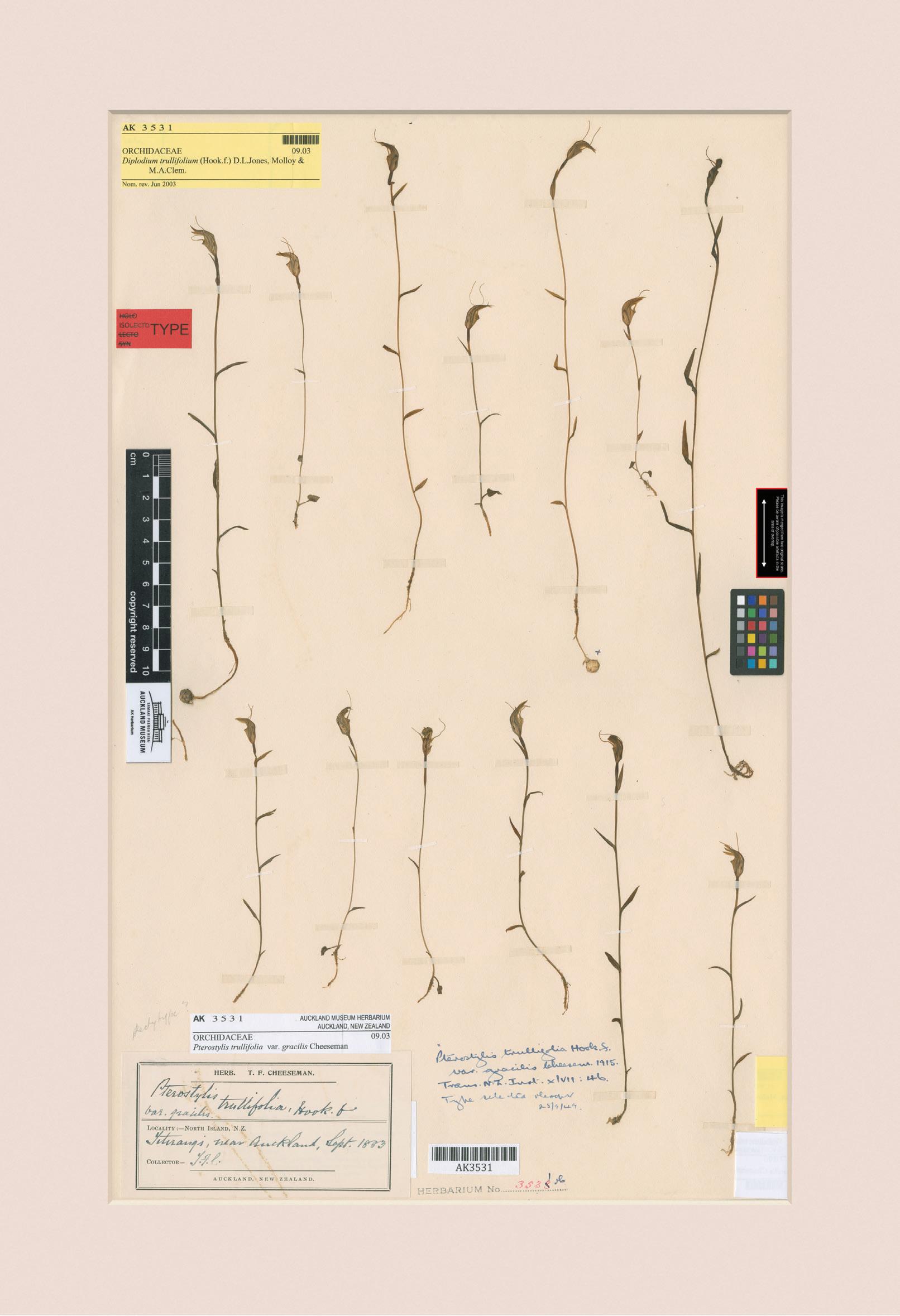
Right The first page of the pivotal letter written to Thomas Cheeseman in 1867 by Joseph Dalton Hooker, director of Kew Gardens. Auckland War Memorial Museum Tāmaki Paenga Hira, MS-58-9-1
expeditions, discovered an orchid in dense bush at nearby Purewa. The first volume of Hooker’s Handbook, the only authoritative publication on the subject available,6 could not help him identify the plant, but Cheeseman deduced that it belonged to the genus Corysanthes (now Corybas). He decided to send a specimen to Joseph Hooker with a letter that pointed out the characteristics by which it differed from the species Hooker had described in his Handbook. 7
Cheeseman’s letter, which included specimens for identification and appraisal, piqued Hooker’s interest. In his reply, a letter dated 22 October 1867, he described the orchid Cheeseman had sent as ‘quite new’8 and invited him to send more plants he found challenging to identify.9 He added that he proposed to name this newly identified plant after Cheeseman.10
A regular correspondence ensued, in which Hooker asked Cheeseman both for information about particular plant varieties and to send specimens of plants native to New Zealand for the collection at Kew. Between 1868 and 1869, for example, Cheeseman sent Hooker seeds and spores, specimens obtained at St John’s Theological College, Meadowbank, and others collected during a week ‘botanizing on the coast between the Waikato River and the Manukau Harbour’.11 In early 1870 Cheeseman sent Hooker detailed descriptions of three plants he had found in the ‘Titirangi Ranges’ and which did not appear to be mentioned in Hooker’s Handbook. 12
The orchid Cheeseman sent Hooker for identification in 1867 was Pterostylis trullifolia — one of the small, hooded variety now commonly known as the trowel-leaved greenhood. Hooker passed the specimen on to Charles Darwin, who had been in New Zealand briefly in December 1835 when the HMS Beagle anchored in the Bay of Islands while on its circumnavigation of the globe. Darwin, best known for the evolutionary theories presented in his groundbreaking book On the Origin of Species (1859), was also studying the flowering plant family of the orchid (Orchidaceae), work that led to his publication in 1862 of Fertilisation of Orchids: On the various contrivances by which insects fertilise British and foreign orchids, and on the good effects of intercrossing 13 The book, based on a series of experiments on the cross-pollination of plants, concluded that the seeds of cross-pollinated plants produced healthier and more vigorous offspring.
Among the first studies Cheeseman made of the plants of New Zealand were, according to W. R. B. Oliver’s manuscript ‘The Life of T. F. Cheeseman’, the ‘devices which ensured that pollen should not be deposited on the stigma of the same flower but should be transferred by insects or birds to other flowers, either on the same or on other plants’ — a type of transference known as cross-pollination and resulting in cross-fertilisation.14
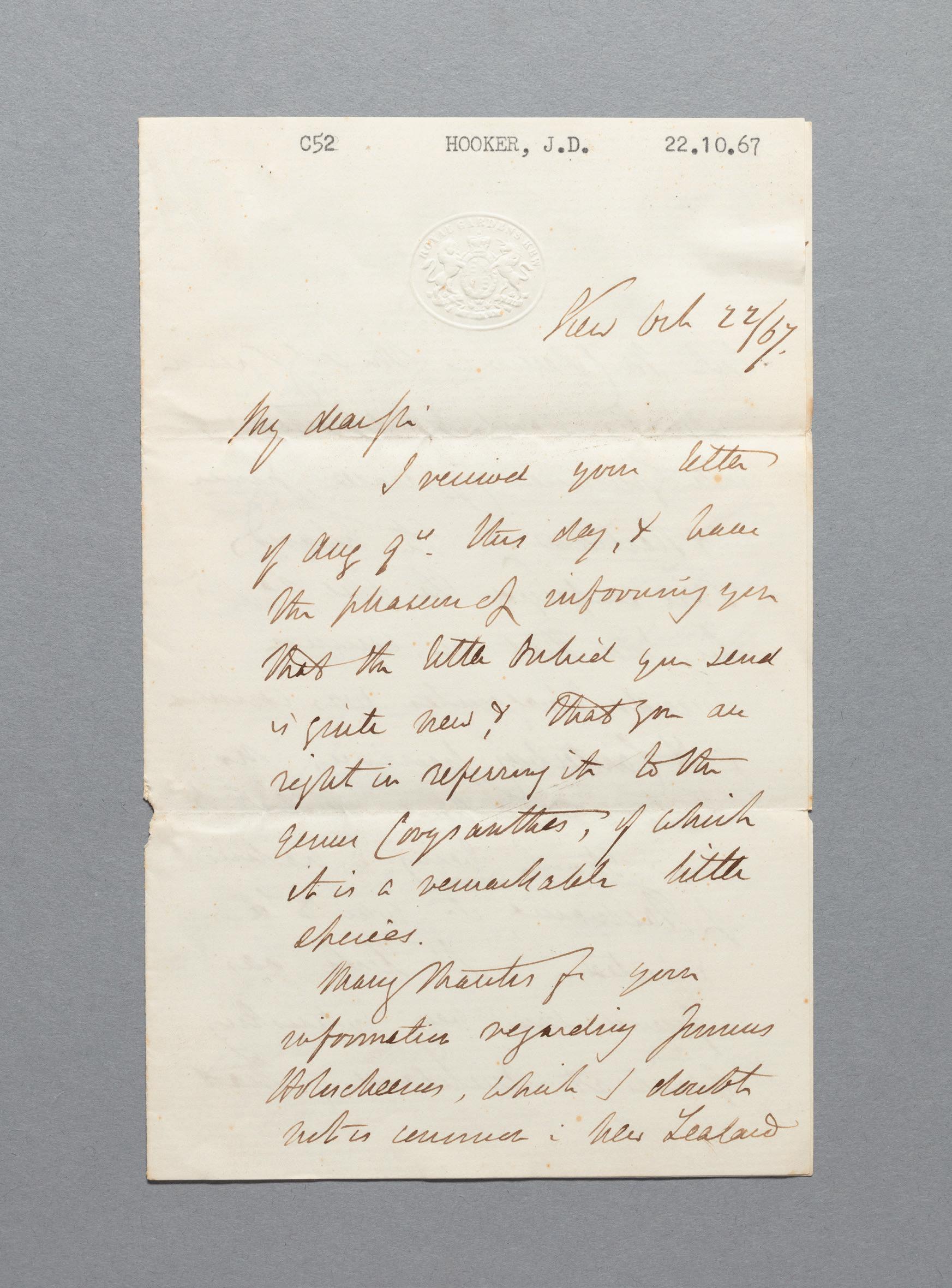
Mr Darwin’s correspondent
Right Thomas Cheeseman’s June 1873 letter to Charles Darwin reflected his ambition to connect with one of the foremost scientific minds of his time. Auckland War Memorial Museum Tāmaki Paenga Hira, MUS-1995-37-2-85
Following The first page of Thomas Cheeseman’s second ever paper to be published in the Transactions of the New Zealand Institute. Auckland War Memorial Museum Tāmaki Paenga Hira, Q93
TRA
By 1871 Cheeseman had four more years of serious botanising under his belt and was confident enough to read his first paper, ‘On the botany of the Titirangi district of the Province of Auckland’, to the Auckland Institute. In 1872 the paper was published in volume 4 of the Transactions of the New Zealand Institute. The paper, which included a condemnation of the settlers’ practice of burning off natural vegetation in the spring, described the topographical features and flora of the Titirangi area with ‘considerable minuteness’ and estimated that there were about 460 species of plants of various kinds in the district. It remains the only account of the vegetation of the Waitākere ranges before its drastic modification by settlers.15
Cheeseman’s second paper, and his first on the subject of orchids, ‘On the fertilization of the New Zealand species of Pterostylis’, described the mechanism by which pollination was carried out by small flies. Delivered in 1872 and published in volume 5 of the Transactions later that year, it noted the omission of the mode of fertilisation of Pterostylis trullifolia in Darwin’s book:
Although none of the New Zealand Orchideae exhibit a mode of fertilization, founded on such complexity of structure and specialisation of parts . . . several kinds present interesting and noteworthy peculiarities. These are so strongly marked in Pterostylis, that I have ventured to draw up the following account of my observations on that genus. I have been the more induced to do this from the fact that Mr. Darwin’s book ‘On the Fertilization of Orchids’, which is deservedly considered to be the standard work on the subject, does not contain an account of a similar method of fertilization.16
Cheeseman boldly sent a copy of the paper — which included a single page of lithographic illustrations by botanical and scientific illustrator John Buchanan (1819–1898) — to Charles Darwin, along with a letter that was confident but suitably deferential:
The well known interest which you take in the fertilisation of Orchids, has induced me to forward you the enclosed copy of a paper contributed by me to the New Zealand Institute, in which I have attempted to describe the singular contrivances in our species of Pterostylis . . . I should much like . . . to have your opinion on the subject. Do you not think that the Australian Genus Calaena, in which the labellum is even more irritable than in Pterostylis, is likely to be fertilised in an analogous manner? I have not seen recent specimens, but the plant is so nearly allied

Mr Darwin’s correspondent


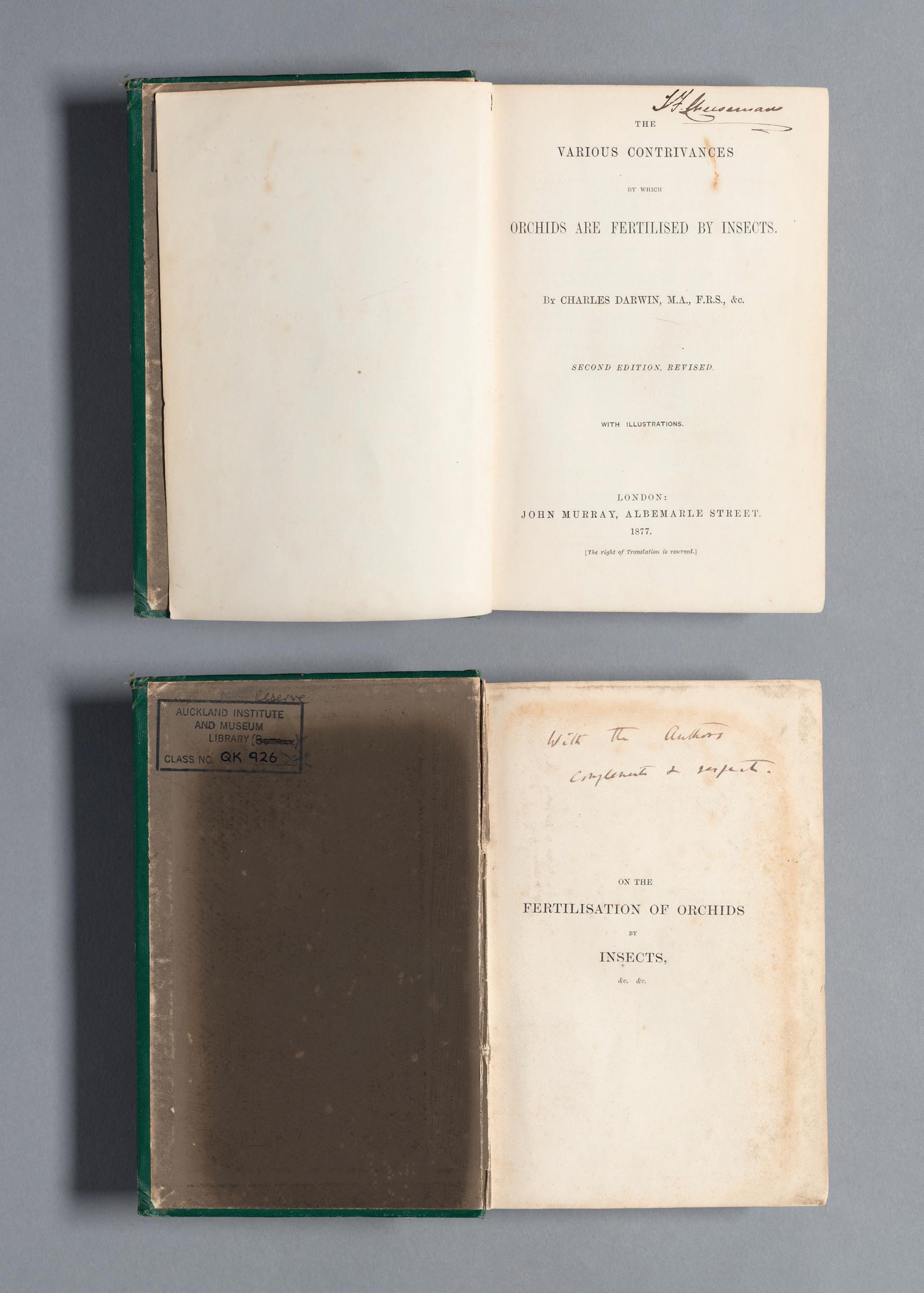
Above The title page of Thomas Cheeseman’s copy of Charles Darwin’s 1877 book The Various Contrivances by which Orchids are Fertilised by Insects Auckland War Memorial Museum Tāmaki Paenga Hira, QK926 DAR
Below Cheeseman’s copy of The Various Contrivances by which Orchids are Fertilised by Insects, signed by the author. Auckland War Memorial Museum Tāmaki Paenga Hira, QK926 DAR
to Pterostylis that this view seems highly probable. If it would be of any use to you I should be happy to forward you specimens of our Orchideae or to procure you any information in my power.17
Cheeseman received a brief but friendly response from Darwin, who thanked him for his ‘extremely interesting paper’.18
In the second edition of his book on orchids, The Various Contrivances by which Orchids are Fertilised by Insects (1877), Darwin included Cheeseman’s description of Pterostylis trullifolia along with the acknowledgement that his information was ‘taken from the admirable description given by Mr Cheeseman of Pterostylis trullifolia’.19 Charles Darwin later presented Cheeseman with a copy of this edition, inscribed ‘With the Author’s compliments and respect’.20
In 1874 Cheeseman, now aged 29, leapt from presenting papers at the meetings of the Auckland Institute to being its secretary and the curator of the Auckland Museum, which was by then under the institute’s governance. He was on his way to becoming one of the leading figures in the growth of science in New Zealand. As his reputation grew, so his networks with some of the world’s greatest botanists and scientific thinkers expanded, informing his ambitions for the museum and remaining vital until his death. This book tells that story.
Mr Darwin’s correspondent
Right A double-page spread from Thomas Cheeseman’s copy of Charles Darwin’s book The Various Contrivances by which Orchids are Fertilised by Insects. Auckland War Memorial Museum Tāmaki Paenga Hira, QK926 DAR
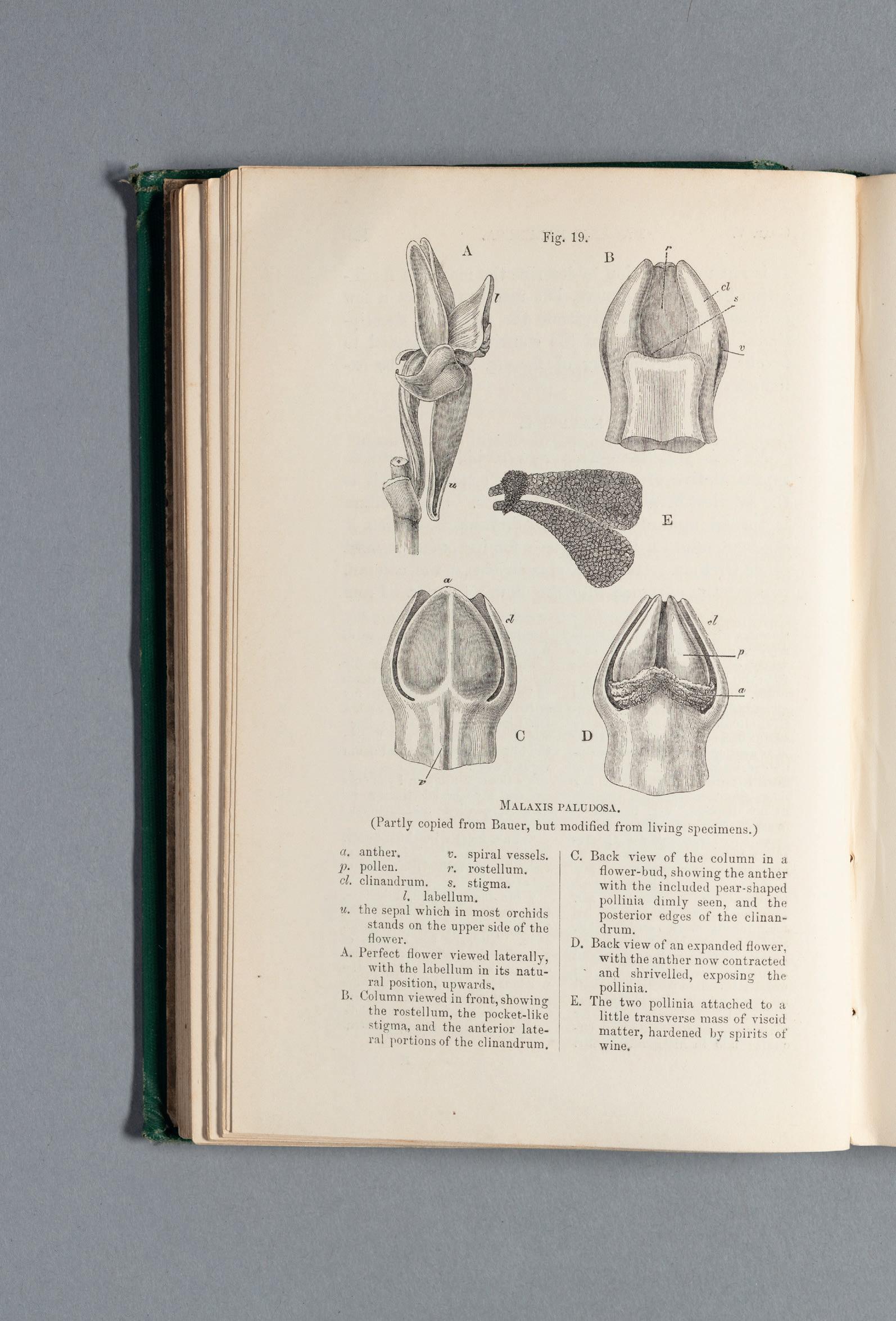
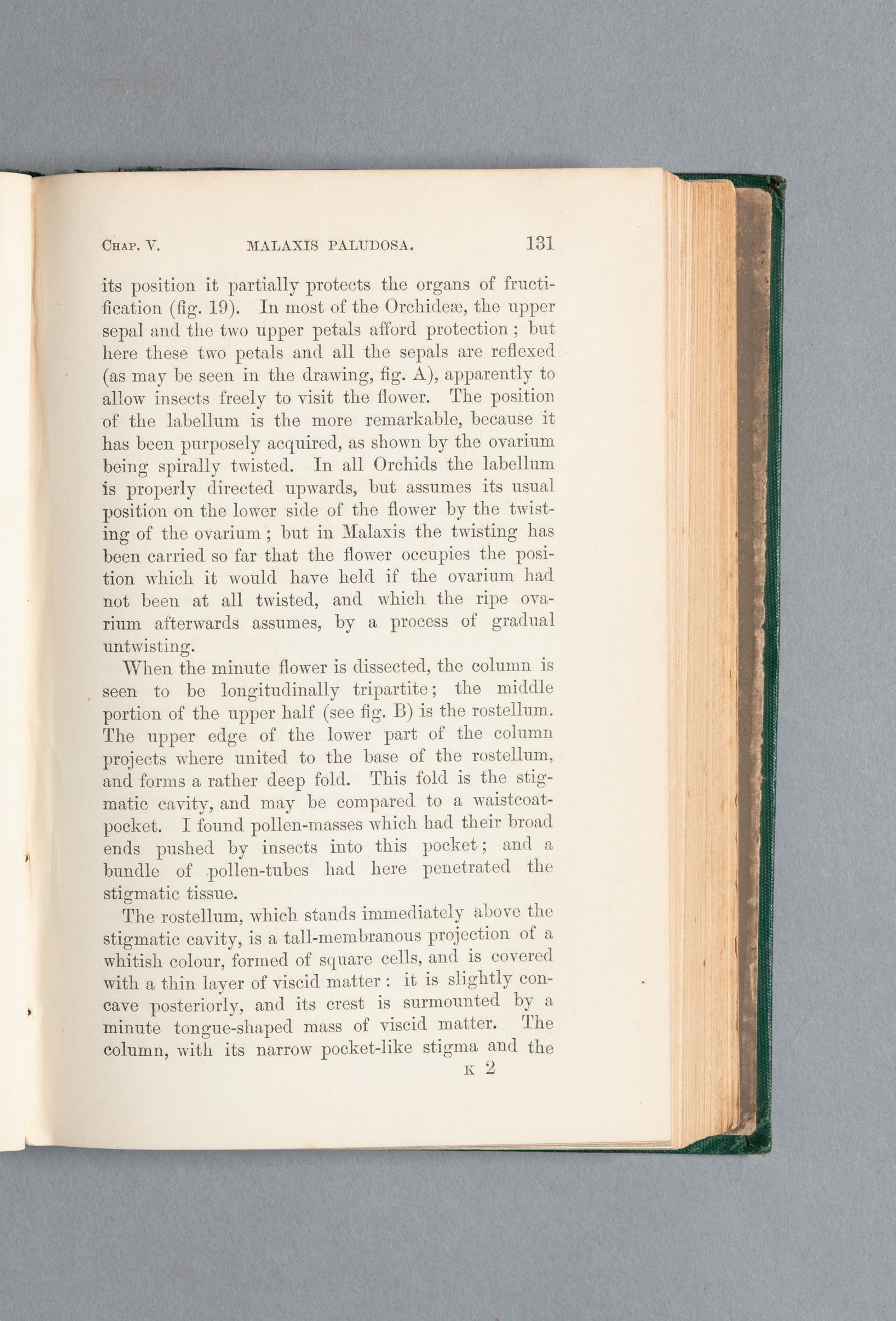
THE BUDDING BOTANIST
Thomas Frederick Cheeseman was born on 8 June 1845 at 3 William Street, close to the docks of Kingston upon Hull, a busy port and industrial centre on the Humber estuary on the east coast of Northern England. He was the first of the five children of Eliza (née Cawkwell, 1816–1891) and Thomas Cheeseman (1815–1907), a Methodist minister. 1 Tom Fred, as he was called to distinguish him from his father, arrived prematurely, and on several occasions nearly died of what was then known as convulsions — but he survived thanks to the care of his mother and a good physician.
His father, an ‘eloquent and popular speaker’, suffered from a throat ailment that was aggravated by preaching and gave up his religious duties in 1851.2 New Zealand soon emerged as a possible place to regain his health. His brother George had left for Auckland in 1853 and his brother-in-law Thomas Cawkwell, who had been living in Auckland since 1846, suggested that Cheeseman and his family emigrate there.
In November 1853 Thomas and Eliza Cheeseman and their four children, Thomas, Emma, Ellen and Clara (their fifth child, William Joseph, was born in Auckland in 1854), and Eliza’s two sisters, Harriet and Sara, embarked on the Artemisia at Gravesend on the River Thames and set sail for New Zealand. 3 On board were 37 passengers, among them two other ministers — W. Wilson and John Fordham4 — and a large cargo of supplies for the young settlement, including 40 cases of Colman’s starch, 100 cases of sperm-whale oil candles, 10 barrels of currants, 5 70 dozen spades and eight hogsheads of London porter.6
By late March 1854 the Artemisia was 122 days out from London and expected to soon sight New Zealand,7 when young Thomas Cheeseman heard an ominous grating sound and rushed to inform the captain. The ship had grazed a reef near Otou North Cape, but thanks to Cheeseman’s warning the captain had time to change course and avoid running aground. 8 On 4 April 1854, after a six-month voyage, the Artemisia docked at Onepanea Commercial Bay in Auckland.
Previous Detail of Myosotis concinna, collected by Thomas Cheeseman at 4500 feet on Mount Owen, Nelson (see page 248). Museum of New Zealand Te Papa Tongarewa, SP002360
Auckland had been made the colony’s capital in 1841, when Governor William Hobson decided to move the centre of
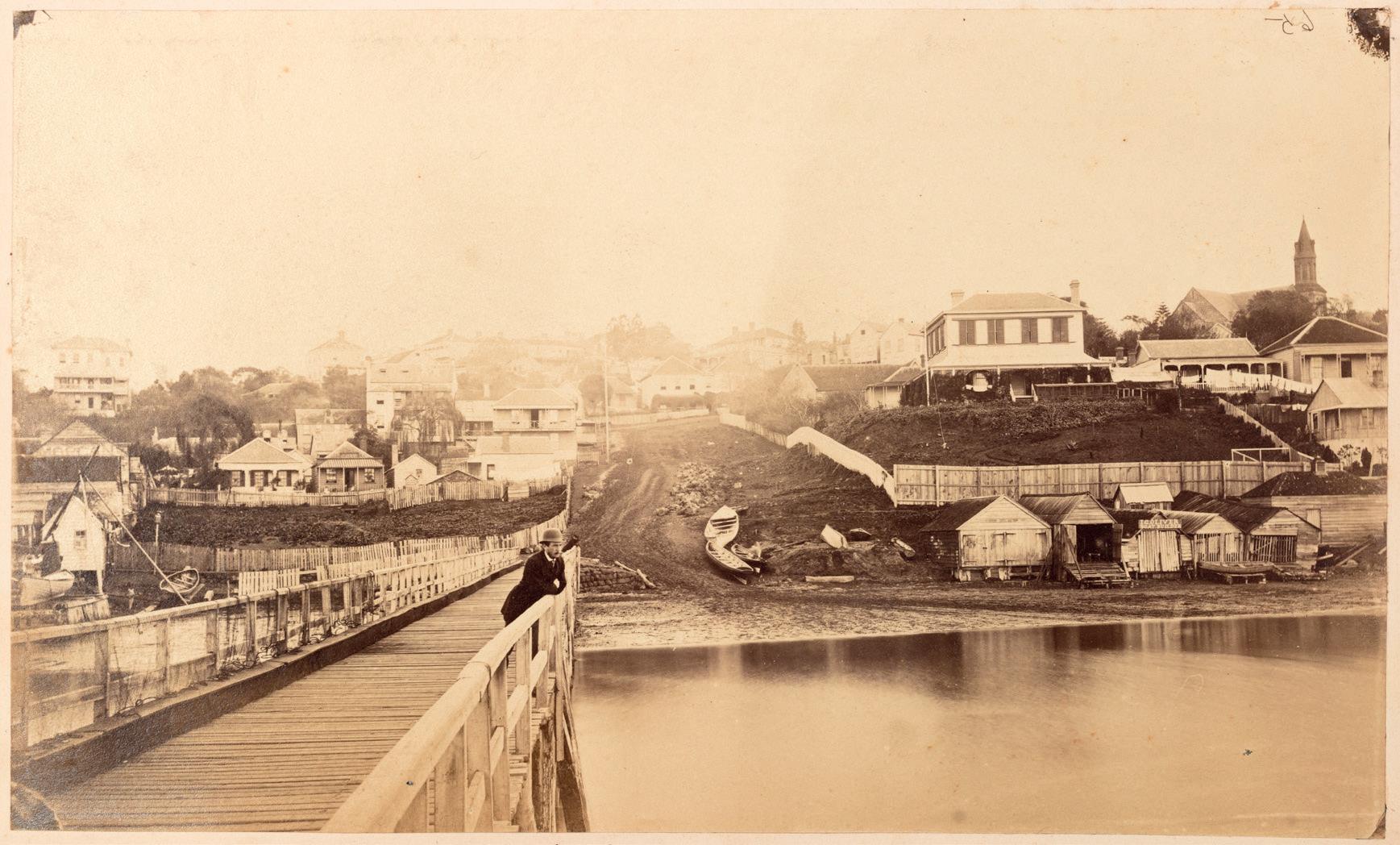
Above Wynyard Pier, built between Official Bay and Mechanics Bay in 1851 and photographed in the late 1860s. The steeple at right is St Paul’s church, not far from the Auckland Museum that opened on Princes Street in 1876. Auckland War Memorial Museum
Tāmaki Paenga Hira, PHALB-91-p2-3
RIGHT An 1868 photograph of Queen Street and the Horotiu Stream, later renamed the Ligar Canal. The canal became an open sewer and was later piped underground. Auckland War Memorial Museum
Tāmaki Paenga Hira, PH-ALB-91-p2-3, PH-ALB2-P109-4
Following Shortland Crescent (later Street) in 1859. It was then Auckland’s main thoroughfare. Alexander Turnbull Library, 1/2-049798-F


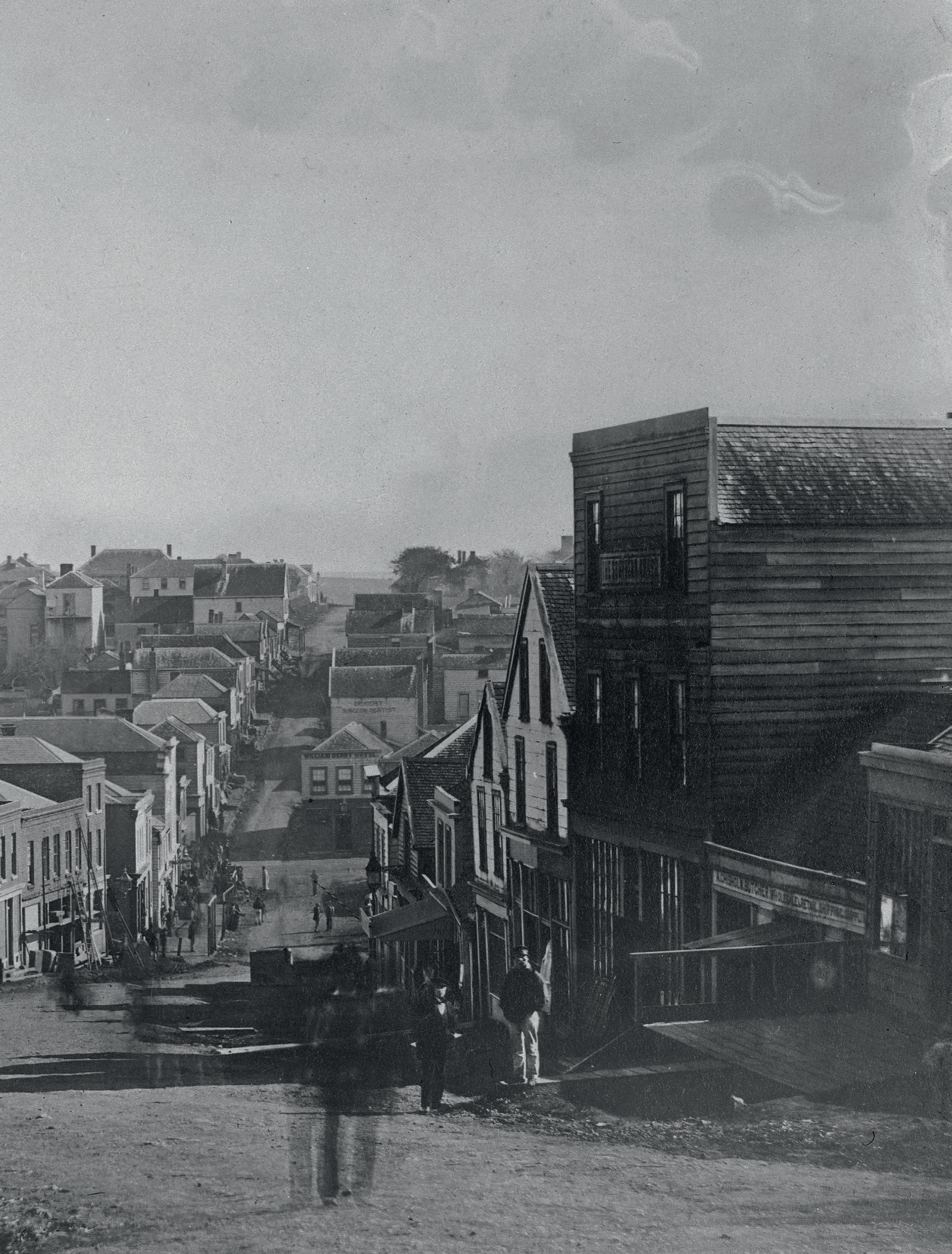
government from Okiato (Old Russell) in the Bay of Islands further south. At that stage Auckland was ‘a ramshackle colonial settlement’ about to experience rapid and ‘relentless’ growth.9 It lay in a hollow, hugging Commercial Bay, which was bounded to the east by the prominent headland of Te Rerenga Ora Iti Point Britomart (removed in the late 1870s to provide fill for land reclamation at Mechanics Bay). Its townspeople included traders, whalers and other enterprising types, and the principal — and steep — thoroughfare at that stage was Shortland Crescent, officially renamed Shortland Street by 1870. At its centre was the settlement’s vital link with the outside world, Queens Wharf, first built in 1852.
It was a scruffy, makeshift little town on the edge of empire. One immigrant who arrived in 1842 noted in his diary that of the first five businesses in Shortland Crescent, two were ‘grog shops’, along with a shoemaker’s and a baker’s.10 But soon more aspirational structures began to emerge from the huddle of small buildings: St Paul’s Anglican church at the top of Shortland Crescent was completed in 1841 (and demolished in 1885), and Government House was built nearby in 1856. By 1860 there were nearly 8000 new Auckland residents, along with a sizeable Māori population, in particular Ngāti Whātua, Ngāti Pāoa and Tainui, and a large military contingent stationed at the army barracks on Fort Britomart.11
Thomas Cheeseman arrived in New Zealand two months short of his ninth birthday. At first the family lived with Thomas and Agnes Cawkwell on their farm near Panmure, and by early 1855 Cheeseman senior was listed as a farmer living at ‘Bird Grove’, in Epsom,12 described in August 1861 as one of the area’s ‘prettiest and most admired villa residences’, with around 20 acres of ‘excellent land’.13
The then village of Epsom was situated in a valley between four volcanic hills — Maungawhau Mount Eden, Maungakiekie One Tree Hill, Ōhinerau Mount Hobson and Te Tātua a Riukiuta Big King. During the 1840s and 1850s Epsom developed into a farming district, and in the 1860s wealthy Aucklanders established large country homes there. By the end of 1855 Cheeseman senior was advertising for an ‘active man’ to assist with farm duties, including milking eight cows.14 The following year he was offering ‘pure unadulterated milk, fresh from the cow every morning’.15
It seems the Auckland climate had proved the remedy for Cheeseman senior’s throat ailment: he was now able to embark on a busy programme of lectures to a growing number of local organisations, including the Auckland Mechanics’ Institute, which had been founded in September 1842. Organisations such as this, that began in Britain and spread to its colonies, aimed to provide an
above John Johnson’s watercolour of Epsom, painted around 1860.
Auckland War Memorial Museum Tāmaki Paenga Hira, PD-1963-8-11
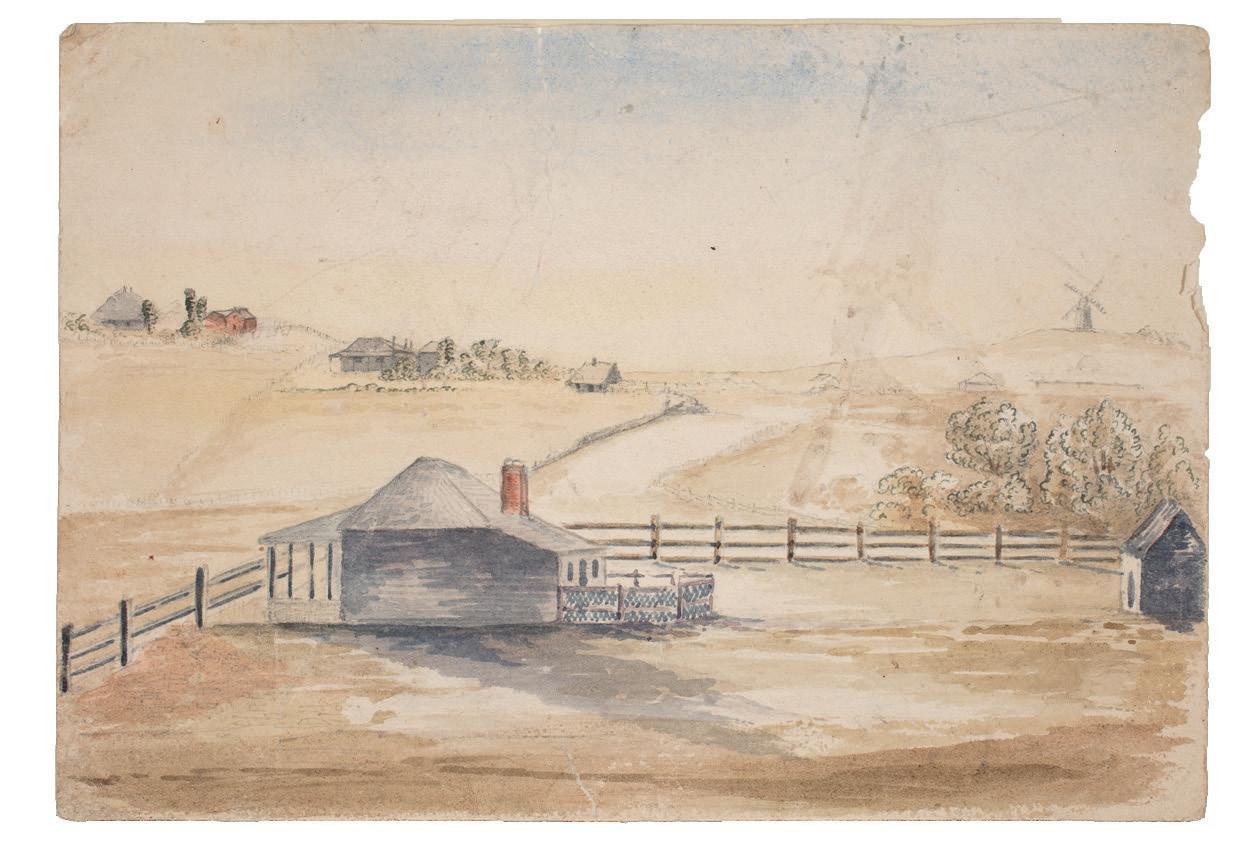
education to working men, primarily in technical subjects. At first the Mechanics’ Institute held its meetings, debates and lectures at the Exchange Hotel on Shortland Street and in commercial premises, and it rented a building known as Cruickshank’s cottage in the Chancery Street area for use as a library.16
From 1843 until 1879, the institute operated out of permanent albeit humble rooms on Chancery Street on land granted by the Crown.17 The inaugural lecture was given by the attorney-general William Swainson at the Exchange Hotel, and a subsequent presentation, ‘On botany’ by Henry Falwasser, editor and proprietor of the short-lived Auckland Times, suggested an early interest in that subject among Aucklanders. Within six months of its opening, the Mechanics’ Institute could claim to be promoting the educational development of the settlement with its members-only library that ran to 273 volumes.18
The Mechanics’ Institute was the first of three organisations that made important contributions to the scientific community of colonial Auckland. It was followed in 1861 by the Auckland Acclimatisation Society (of which Cheeseman senior was a founding member),19 set up with the aim of introducing what it considered ‘useful’ exotic species of animals, birds and fish to New Zealand.20 The third organisation was the Auckland Institute, which held its first meeting in 1868. All three organisations aimed to provide public education and promote economic progress, and reflected the ways in which science was ‘embedded within civic culture’.21
Cheeseman senior’s lectures to the Auckland Mechanics’ Institute were usually of a socially or spiritually uplifting nature, on topics such as ‘Footprints of commerce’,22 ‘The importance of
above John Kinder’s 1878 watercolour of St John’s College in Meadowbank, where Cheeseman attended school and did his first botanical fieldwork. Auckland Art Gallery Toi o Tāmaki, 1989/19/1
right principles’23 and ‘The claims of our country on its educated men’.24 He was also involved with the Auckland Young Men’s Christian Association (YMCA), which was formed in 1856 and soon had its own library and reading room on Durham Street.25 He was on the committee, and his lectures on topics such as ‘The divine law in relation to man’26 and ‘True glory’27 suggest that he was becoming involved in local church matters. He was also a member of the Freedom of Religion Society,28 which promoted the personal entitlement to hold a religious conviction and to live according to deeply held religious beliefs,29 and a preacher and speaker at organisations such as the Sabbath school of the Primitive Methodist Chapel, whose adherents claimed to practise a purer form of Christianity. Cheeseman senior was interested in educational matters, too: in 1857 he was a commissioner on the Board of Education, 30 established under the Education Act of that year to promote the maintenance of teaching standards and provide funds to the regional education boards under its control. In 1861 his public service commitments increased when he was elected to represent Parnell on the Auckland Provincial Council. 31
In October 1857, just three and a half years after the family’s arrival in Auckland, the Cheeseman homestead was destroyed by fire. The property, valued at £400 but insured for only £200, was described as being in Remuera, ‘adjoining the Tamaki Road’ (later Remuera Road). 32 That misfortune seems to have prompted a major development: by the middle of the following year, Thomas and his brother George Cheeseman had set up in business as licensed auctioneers, land and commission agents, with an office first on Shortland Street and then on Queen Street. 33 Advertisements appeared in the newspapers for weekly sales by Messrs Cheeseman: in July 1858, for example, they advertised an ‘excellent dog cart’, 34 and in mid-1861 they were selling their brother-in-law Thomas Cawkwell’s property near ‘the Village of Panmure’. 35
From the outset, Cheeseman junior was intrigued by the flora and the natural environment of his new home. Minutes after stepping off the Artemisia in 1854 he had collected a specimen of a silver tree-fern (ponga or Cyathea dealbata) growing nearby. He took it with him on the long trip by dog cart to his uncle’s farm in Panmure, where it stayed in his mother’s bedroom until ‘thoroughly wilted’. 36 At school and in the holidays, he collected and studied native plants in the surrounding countryside.
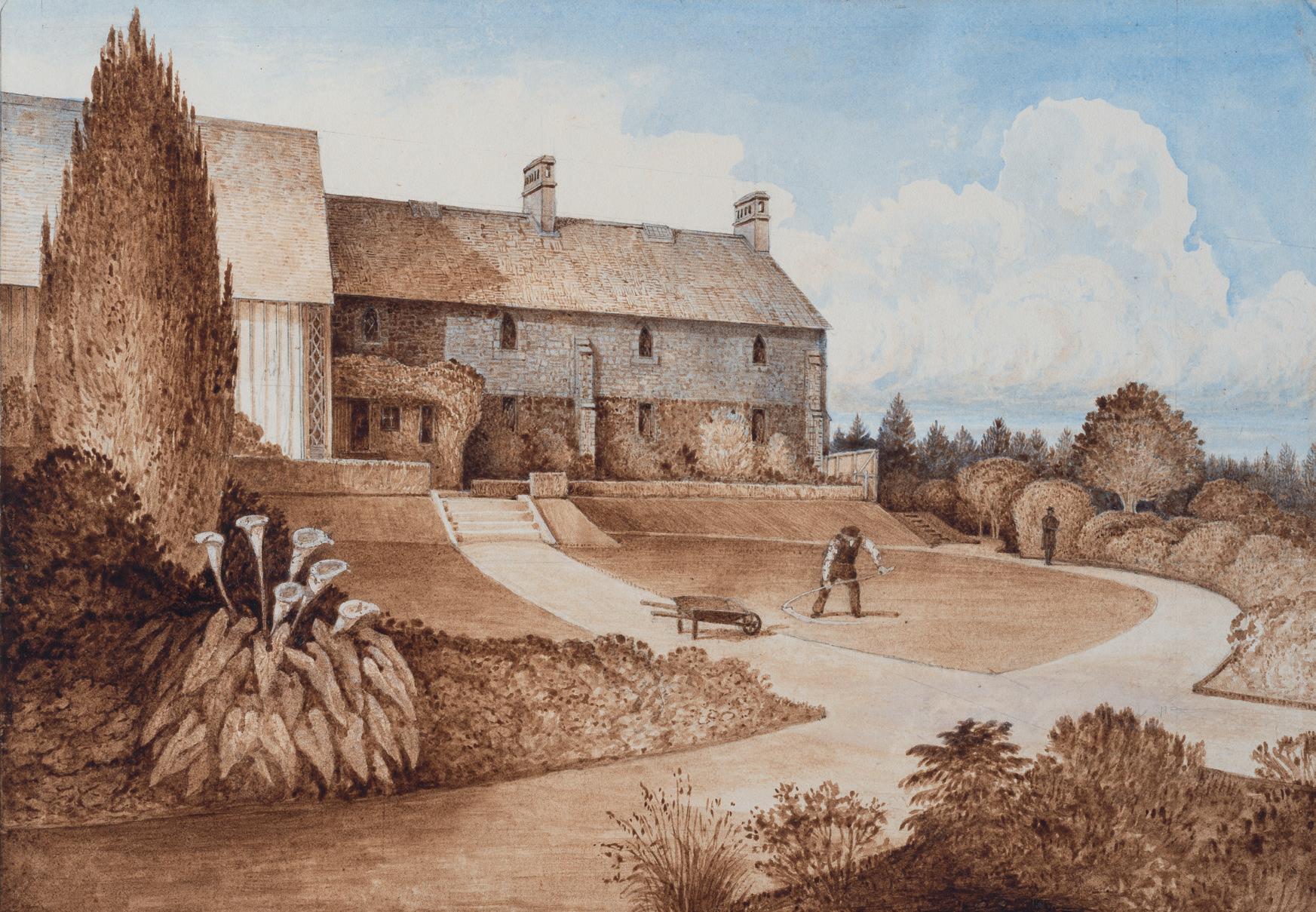
He and his three sisters set up a popular ‘field club’ of family members and other local enthusiasts who went on botanical excursions around the Auckland region on foot. The native plants growing abundantly in the open spaces in the town and surrounding scrublands were, of course, new to him, and outside Auckland pockets of native bush were still largely in pristine condition.
Cheeseman junior attended the Church of England Grammar School on St Stephens Avenue, Parnell, established by Bishop George Selwyn in 1854 and run by the Anglican minister, scholar and artist John Kinder. In the late 1850s, when the family moved to a larger farm in Meadowbank, he attended the school at nearby St John’s Theological College and carried out early botanical explorations in the surrounding bush. After finishing school at age 19 he went to work on his father’s farm, 37 supplementing his income with the sale of ‘curios’ and dried plants, along with harvesting and selling harakeke (flax or Phormium tenax), which was then used for making rope and twine. Meanwhile, he was continuing to collect specimens and build up his own herbarium.
The 1850s was the start of a period of widespread investigation into the botanical sciences across the British Empire, and the Royal Botanic Gardens at Kew, established in 1841, became the centre of authority for collecting and classifying native flora from the colonies. At Kew, one figure came to dominate this quest: Joseph Dalton Hooker (1817–1911), who was appointed assistant director at the Kew Gardens in 1855, and who in 1865 succeeded his father, William Jackson Hooker, as director, a position he held until his retirement in 1885.
Joseph Hooker’s botanical expertise was the result of extensive experience in the field and the herbarium at Kew, rather than any institutional education in the subject; no such training was then available outside of the medical schools, whose interest in plants was for their medicinal qualities. 38 Between 1839 and 1843 he had been assistant surgeon on board polar explorer Captain James Ross’s ship HMS Erebus, which accompanied HMS Terror on an expedition to the Antarctic. They made stops at Motu Maha Auckland and Motu Ihupuku Campbell islands, where Hooker collected over 400 plant species, and he gathered a further 300 species when the ships were in the Bay of Islands from August to November 1841.
On his return to England, Hooker wrote a six-volume account of the expedition, The Botany of the Antarctic Voyage or Flora Antarctica, published between 1843 and 1860. The third volume, Flora Novae-Zelandiae, contained a comprehensive account of the flora of New Zealand. It was written in two parts: the first, dedicated to the flowering plants, was published in 1853, and the second, on the ‘ferns and other flowerless plants, mosses, liverworts, fungi, lichens, and seaweeds’, in 1855. 39
Flora Novae-Zelandiae relied on Hooker’s own collections made in the Bay of Islands and those of others he had consulted, including the missionary and botanist William Colenso and the botanist Andrew Sinclair. Hooker also used his position at Kew to survey the collections from previous expeditions to New Zealand, including those compiled by the botanists Joseph Banks and Daniel Solander on Captain James Cook’s first voyage to the South Pacific in 1768–71.40
In 1864 Hooker published the first of his two-volume Handbook of the New Zealand Flora: A systematic description of the native plants of New Zealand and the Chatham, Kermadec’s, Lord Auckland’s, and Macquarrie’s islands, a more accessible and updated version of Flora Novae-Zelandiae. It followed a similar structure to Flora: the first part covered flowering plants, and the second, published in 1867, dealt with Hepaticae (liverwort, a

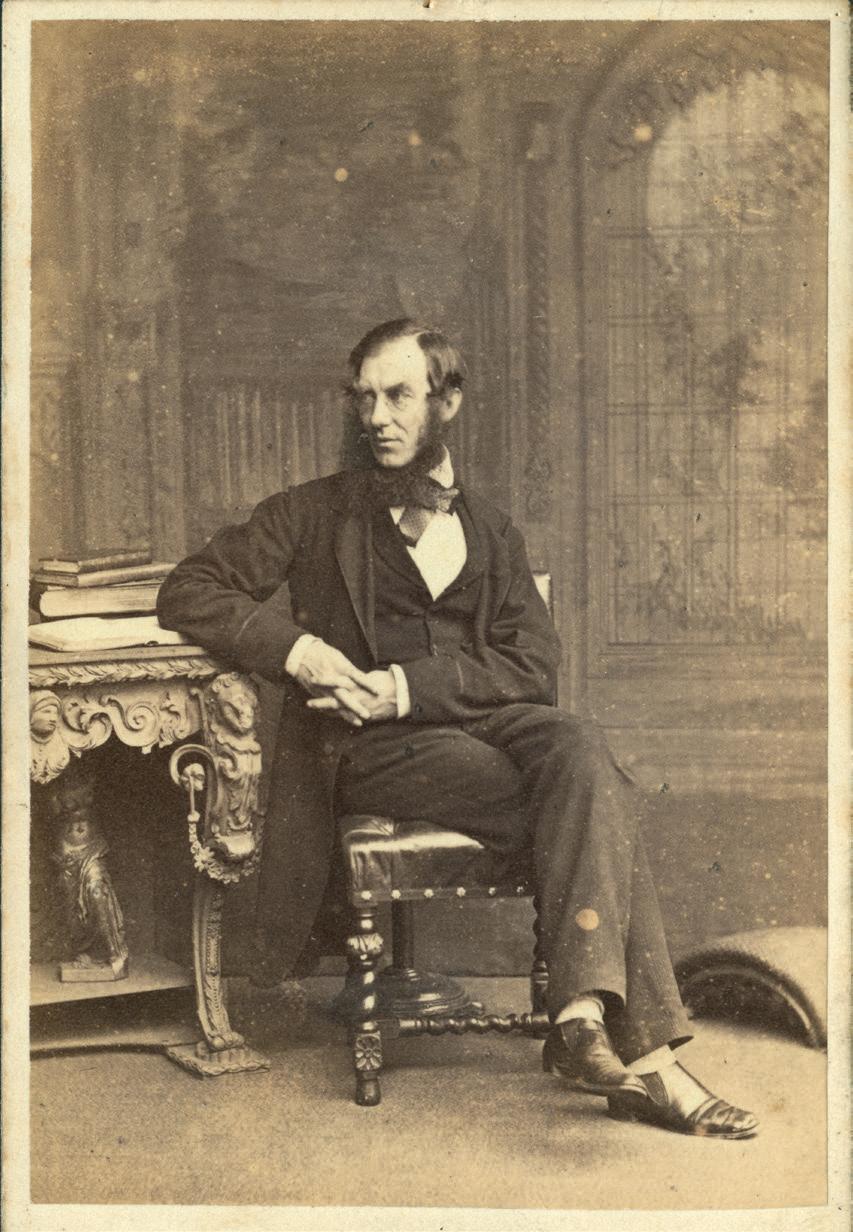
Above Charles Darwin (1809–1882) photographed by his son Leonard Darwin around 1874. Wellcome Collection
Above right Joseph Dalton Hooker (1817–1911), eminent British botanist and director of the Royal Botanical Gardens at Kew, photographed by Ernest Edwards in 1864. Alexander Turnbull Library, PA2-0664
